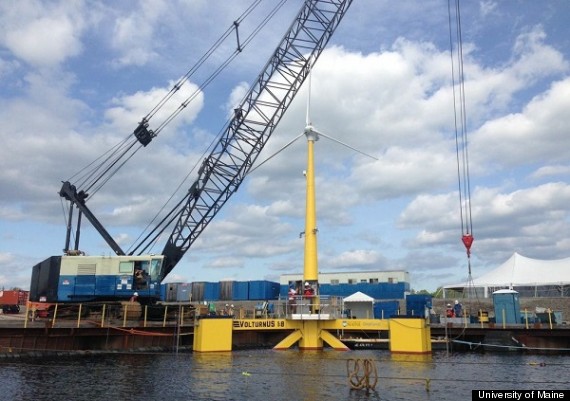The sale will auction an area previously designated by BOEM as the Rhode Island/ Massachusetts Wind Energy Area (MA/RI WEA) located 9.2 nautical miles south of the Rhode Island coastline. BOEM will divide the area into two lease areas, referred to as the North Lease Area (Lease OCS-A0486) and the South Lease Area (Lease OCS-A0487). The North Lease Area consists of about 97,500 acres and the South Lease Area covers about 67,250 acres. The National Renewable Energy Laboratory has stated that the North Lease Area has the potential for installed capacity of 1,955 megawatts (MW), and the South Lease Area has the potential to support 1,440 MW of installed capacity-- together, more than 3 gigawatts of electricity, enough to power more than 1 million homes. For a map of the MA/RI WEA, click here.
- Deepwater Wind New England, LLC (Block Island demonstration project developer)
- EDF Renewable Development, Inc.
- Energy Management, Inc. (Cape Wind's developer)
- Fishermen’s Energy, LLC (Atlantic City demonstration project developer)
- Iberdrola Renewables, Inc.
- Neptune Wind, LLC
- Sea Breeze Energy, LLC
- U.S. Mainstream Renewable Power (Offshore) Inc. (U.S. subsidiary of a large U.K. offshore wind developer)
- US Wind Inc.
In addition to the list of eligible bidders, the notice contains specific information pertaining to the areas available for leasing, lease provisions and conditions, auction details, criteria for evaluating bids, award procedures, lease execution and other information.
Department of Interior Secretary Sally Jewell, the recently appointed successor to Ken Salazar, indicated that a successful lease sale for the MA/RI WEA would accelerate offshore wind leasing for other designated WEAs along the eastern seaboard of the United States: “If there is good interest in this one, then I think you will have this happening on a consistent basis,” she said.
Although the auction of subsea leases is an encouraging step for U.S. offshore wind developers, Secretary Jewell noted that development of the commercial offshore wind industry is in the hands of the private sector. “I can’t promise that they will be in production in four years, but we don’t want to be a roadblock,” Jewell said. “The market will dictate, but we certainly don’t want to get in the way.”
